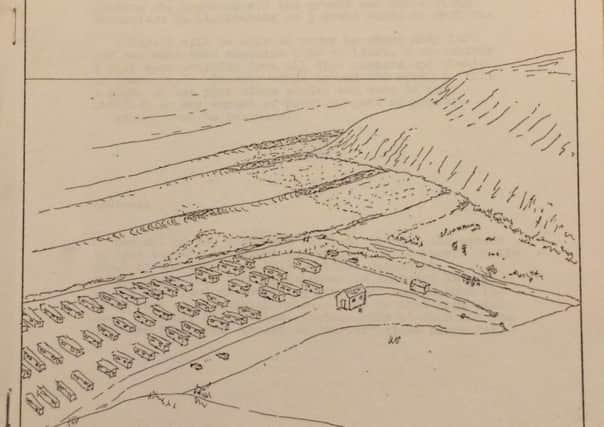Point Break, and the early days of Scottish surf journalism


In the meantime, let’s journey back to the days when Scottish surfing was still in its infancy via a couple of fascinating artefacts that now seem like relics of some ancient civilisation. At the end of our interview, Bennetts – who is the nearest thing Scottish surfing has to an official historian – handed me a copy of Point Break, the Edinburgh Surf Club Magazine, dating from 1975 (Volume 1, Issue 3, cover price 10p) and a copy of the programme for the 1993 European Surfing Championships, which were held in Scotland that year, in the waves around Thurso.
Produced using nothing more sophisticated than a typewriter, a photocopier and a staple gun, Point Break was evidently a real labour of love. On the cover there’s a line-drawing of the right-hander at Pease Bay breaking with typical ruler-edged precision, with a sea of static caravans in the foreground and a couple of figures down by the shore who may or may not be surfers checking out the waves. In his introduction on page three, the magazine’s newly appointed editor Robin Salomon explains that, having taken over the role from Bennetts so that he could put more energy into running other aspects of the surf club, he will be aiming to make Point Break a bi-monthly publication and “a real threat to Surfer”. He also explains that “all complaints about typing and spelling mistakes will be treated in strict confidence and then disregarded.”
Advertisement
Hide AdAdvertisement
Hide AdThe mag is full of unexpected insights into what life was like for Scotland’s first generation of waveriders. It’s well-known, for example, that there was a big audience for informal surf film screenings in California in the 1960s and 70s, but who would have thought that a screening of Jim Freeman and Greg MacGillivray’s 1972 classic Five Summer Stories would have drawn a crowd of 120 at Leith Town Hall? The Edinburgh Surf Club apparently feared the event might be “an expensive wash-out” but in the end they “only lost a couple of quid”.
Another period highlight is Part Three of a guide to building your own surfboard. These days the complicated and messy art of surfboard manufacture is not something most surfers tend to get involved with, but 40-plus years ago, when ready-made boards were expensive and hard to come by, there was apparently quite a DIY scene.
Other highlights include a report from the 1974 Scottish National Championships, which saw Batten narrowly beating Bennetts and Salomon in 2-4 foot surf at Pease Bay; a guide to surfing at Machrihanish on the Mull of Kintyre (“low-flying golf balls can be dangerous to the unwary”); and an anonymous dispatch from “The Voice of the North” telling adventurous East Coast surfers about some of the gems to be found in and around Thurso.
The Eurosurf ‘93 programme is also very much of its time, although in this case it’s really the adverts that date it: the back page ad for Gul wetsuits, for example, has English surfer Russell Winter sporting a day-glo Gul G-Force suit that’s so bright it makes your teeth hurt, while the ad for Wavelength magazine on page four shows Aussie Tom Carroll in his muscle-bound, power-surfing prime.
The last few pages are left blank with the word “results” at the top, presumably so that spectators can keep their own record of the action. Now, of course, things are a bit more hi-tech. As I write this, Eurosurf 2017 is in full swing over in Jæren, Norway, and I’ve been watching it live online. Rather than scribbling notes in the back of my programme, if I want to find out how Team Scotland are doing I need only click on the “results” button on the Eurosurf website and I can see that, while most of the team have now been eliminated, Phoebe Strachan is still going strong in the women’s bodyboard category and Joel Christopherson is still in with a shout in the men’s bodyboard.
All of which is very convenient, of course, but no amount of computer code could ever replicate the romance of a young surf mag editor feeding a fresh sheet of paper into his typewriter, cracking his knuckles, and then hammering out the first few lines of a brand new issue.